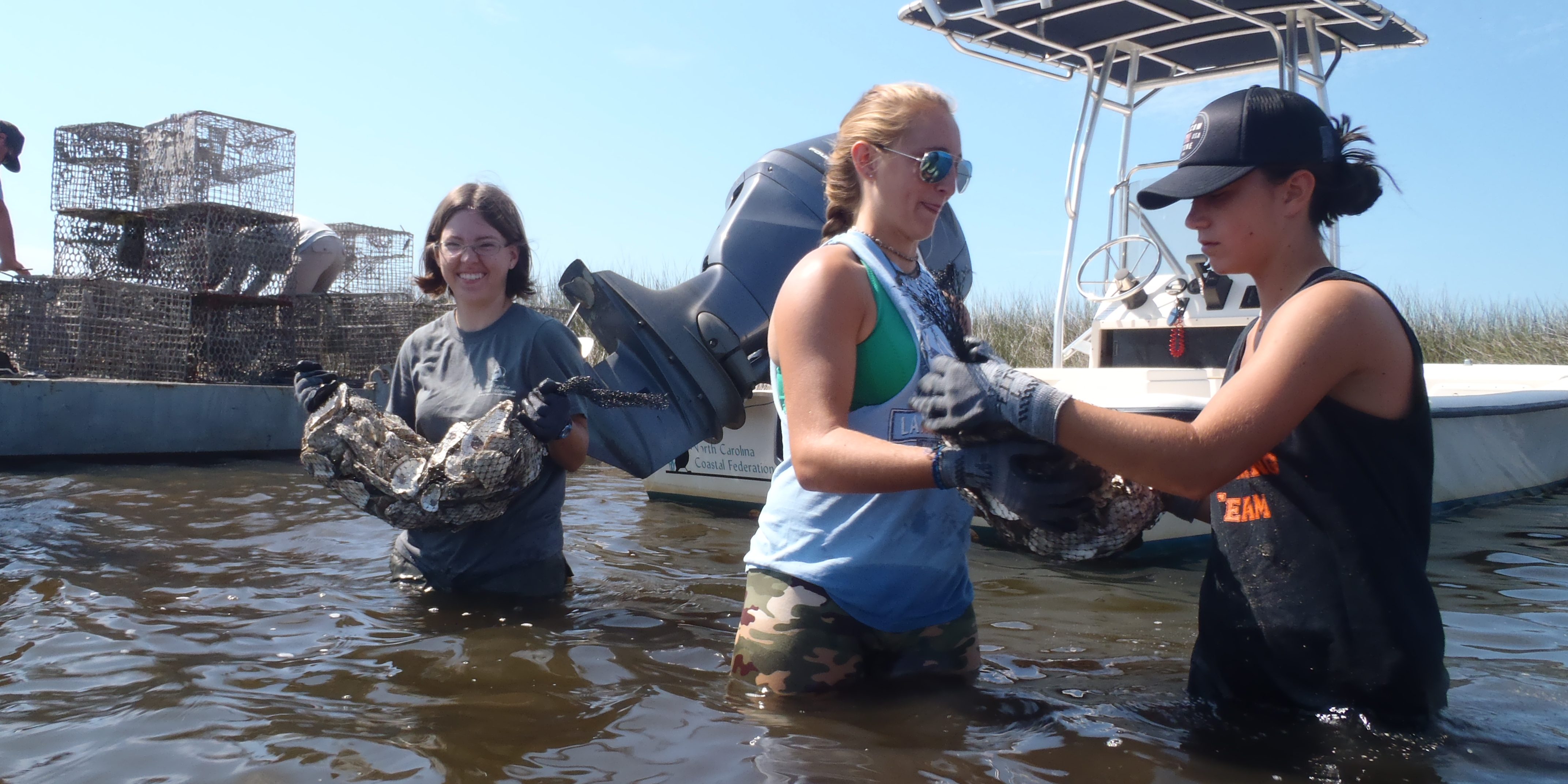The federation and volunteers have been busy building oyster reefs this summer out of recycled crab pots and bags of oyster shell. Volunteers from Youth Build in Elizabeth City, Jennette’s Pier Service in Science Campers, and other local volunteers have lent a hand to the effort. Three areas around Roanoke Island are permitted by the Division of Coastal Management as experimental reefs and are at various stages of being built out.
Six hundred linear feet of reef are permitted at the three sites totaling a third of an acre. While these are not huge reef areas, the federation is very interested to see if the technique of creating oysters out of crab pots can be successful. Oyster shell is typically used for creating the reefs, but it is increasingly difficult to find a reliable supply of the shell for restoration activities.
The reefs are considered experimental because we are using two different building techniques. One technique involves building underwater pyramids with bags of oyster shell. Generously donated shell from Wanchese Fish Company was bagged by college groups earlier this spring and has been deployed by volunteers at two of the reef sites over the summer. This technique has been widely used throughout North Carolina and will be used to compare the success of the second technique in which we build oyster reefs out of upcycled crab pots.
The crab pots were collected in the winter of 2014 and 2015 as part of a Marine Debris cleanup effort with the Division of Marine Fisheries- Sea Grant, and local waterman. They have been modified to serve as oyster reef material. In creating the reefs, the pots are staked down individually; held in place with rebar spuds. The pots are staked within the permitted area. Over time natural oyster spat will colonize these reef sites and build the new oyster habitat.
Over the next three years the federation will closely monitor the success of these two restoration techniques to see if there is merit to using one over the other. Already the federation has observed oyster larvae at one of the sites; several oysters colonized the concrete block over the winter that had been used to mark the site before it was officially permitted. And at another site a myriad green tail shrimp were observed. While nominal, the federation is hopeful that these early signs indicate that the reefs will flourish, providing habitat for other important recreational and commercial species in years to come.

